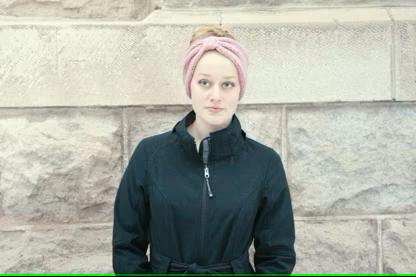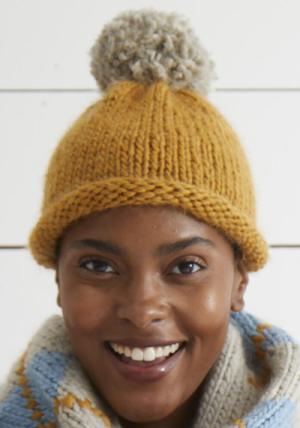*Disclosure: This post may contain affiliate links for products recommended. This means that if you click a link and buy something I may receive some compensation, but this is at no cost to you the reader. Thank you for visiting this website.*
At the time of writing this, it’s autumn – almost winter which always leads me to think about knitting projects I can do. These 10 free headband knitting patterns are ideal for this time of year.
Contents
- 1 Why Knit Headbands / Ear Warmers?
- 2 Quick Easily Movable Knitting Projects
- 3 Easy Beginner Knitted Headband Pattern in Garter Stitch
- 4 Stocking Stitch Turban Style Knitted Headband Pattern
- 5 Horizontal Rib Stitch Twisted Headband Knitting Pattern
- 6 Stocking Stitch Bow Head Knitted Headband Pattern
- 7 Support Ukraine Blue & Yellow Headband Knitting Pattern
- 8 Crossover Headband Knitting Pattern
- 9 Super Chunky Cabled Headband Knitting Pattern
- 10 Celtic Cabled Free Knitted Headband Pattern
- 11 Lacey Rambling Vine Design Knitted Headband
- 12 Christmas Nordic Free Headband Knitting Pattern
- 13 Frequently Asked Questions When Knitting Headbands
Why Knit Headbands / Ear Warmers?
They give you something warm to wear while out walking, Christmas gifts for family and friends and also a way to use up some of your stash of leftover yarn. I have several plastic storage boxes of yarn taking up far too much space in our little English home. So, I have set myself a challenge of making as many different headbands as I can from this stash.
These headwear items can also serve as ear warmers in the autumn when it is not so cold that you need to wear a thick beanie. They are useful to keep hair back away from your face when applying cleansers, and also when you’re exercising too.
Quick Easily Movable Knitting Projects
These items are fun to make as they knit up quickly so you get to see the results in no time at all.
They provide a chance to try different stitches and practice for those new to knitting without having to do a big project.
I also like small projects like this as you can move them around with you for situations when you have time to spare and need something to do.
In this post, I have selected 10 patterns that I like because they’re not too complex and use a variety of different yarns that I know I have in my stash.
Easy Beginner Knitted Headband Pattern in Garter Stitch
The first design I have chosen comes with a video tutorial from Expresson Fiber Arts so you can follow along at each step.
This design is done in simple garter stitch so is a perfect choice for new knitters. Though simple it still looks attractive and the garment can act as ear warmers too.
Yarn recommended is medium weight like Aran / heavy worsted weight and 5.5 mm (US size 9) needles
Pattern
Cast on 14 stitches
Knit every stitch and every row till work measures 19 inches (48 cm)
Cast off and join the cast off end to the cast on end to make a circle.
Cast on 7 stitches and knit every stitch on every row till the work measures 4.5 inches (11.5 cm) long. Cast off
Slide the smaller cinching section under the bigger band and sew the cast on and off sides together with the main headband going through it. Tidy your work up by weaving in all the loose ends.
Stocking Stitch Turban Style Knitted Headband Pattern
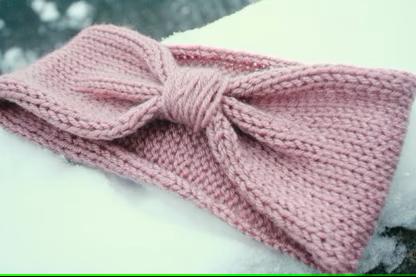
This design, like the first one, also uses a medium-weight yarn like Aran and 5.5mm (US 9) to 6 mm (US 10) needles.
Horizontal Rib Stitch Twisted Headband Knitting Pattern
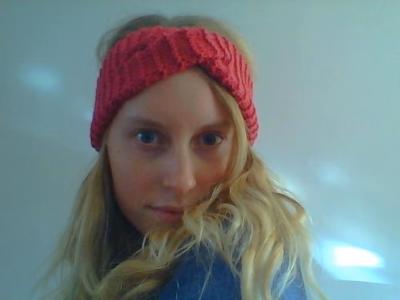
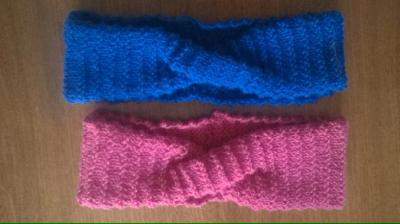
This is another easy horizontal ribbed stitch design for beginners that is done in a medium weight yarn like Aran or worsted and 4.5mm (US 7) needles. As with all these patterns you can use different yarns and corresponding needles just make sure you adjust to get the recommended gauge.
This one looks a bit complex but it’s not really. At a certain point, you place half of the stitches on a stitch holder and work on the other half only, Then you place those to one side while working on the first ones saved on the stitch holder. Then the halves of the knitting are swapped around on one needle to give the twist – then you carry on with the horizontal ribbed pattern.
As with the first two patterns the cast-off and cast-on ends are seamed together using the mattress stitch method. This technique creates a seamless join.
Stocking Stitch Bow Head Knitted Headband Pattern
This design from Girly Knits has instructions for those who want to use straight single-point needles as well as circulars. Another useful feature of this pattern is that she gives instructions for three sizes small, medium and large (15, 17.5 and 19.5 inches)
The recommended yarn is a super bulking weight one and 7 mm (US 10.5) needles
This headband is knitted a bit differently compared to the other designs, as you cast on enough stitches to match the circumference of the band. It has a few rows of knit1 purl 1 rib at each of the edges with a few rows of stocking stitch in the middle. The bow is made entirely from stocking stitch pattern.
Support Ukraine Blue & Yellow Headband Knitting Pattern
I like that this one is done in an Aran weight 100% cotton yarn so it will be really soft. You will need 5mm (US 8) knitting needles.
The band is done by casting on enough stitches to make the circumference of the band which is 4 inches (10cm) The two cast on and off edges are seamed together, then using a method of folding and sewing clearly shown in the instructions the twist is established.
Crossover Headband Knitting Pattern
This design that uses an Aran weight yarn and 4.5 mm ( US 7 ) needles looks more complex than it is. The instructions are quite clear if you follow them step by step.
Super Chunky Cabled Headband Knitting Pattern
The Naoma headband uses a super chunky weight of yarn and thicker 7mm (US 10.5 or 11) needles. This design is a good one for the intermediate knitter, or a beginner wanting to progress, as it allows for the practice of the technique of cabling on a smaller project. You will also gain practice, or learn how to read knitting charts.
Celtic Cabled Free Knitted Headband Pattern
This headband has a Celtic cable design to it, so it will require knowledge of this technique or a willingness to learn. As long as you’re prepared to carefully follow the 16-row cable chart this design is not difficult to do. It uses bulky chunky yarn, with 5 mm (US 8) knitting needles.
Lacey Rambling Vine Design Knitted Headband
This design is done using smaller 3.75mm (US 5) single point straight knitting needles or circulars and sport weight yarn. You’ll get detailed instructions and a chart from which to make this intricate design. It is secured with buttons.
Christmas Nordic Free Headband Knitting Pattern
The design is worked by following an 8-row chart where the red and white colours of yarn are worked. This is colourwork and stranded knitting. The headband has a section of elastic that is sewn to the knitting work so it can be adjusted for both children and adults. This pattern provides a project in which you can practice taking the yarn behind the work ie trapping floats while knitting and purling.
Frequently Asked Questions When Knitting Headbands
As knitted headbands are quite simple projects sometimes you might want to create your design so here are some commonly asked questions that you may be wondering about.
What kind of yarn to use when making knitted headbands?
I like the idea of using up leftover yarn but if you have wool yarn then choose those first. This is best for headbands as it has more give making it stretch better and return to its shape. However, most yarns will work just as well.
How Wide Should a Headband be?
Typically a headband is around 4 inches (10cm) wide but ultimately that is up to your preference of course. If you want it to be an ear warmer too then you might like to do it a bit wider.
How many stitches to cast on for a knitted headband?
Assuming that an average-width headband is being made ie 4 inches (10 cm) the number of stitches you need to cast on will depend on the weight of yarn you’re using.
So look at the ball band to find the knitting gauge. This will tell if you knit to the gauge, how many stitches to cast on with that yarn to get a 4-inch (10cm ) square.
Sometimes, if the yarn is made elsewhere, for example in France (Bergere) then you need to just look for the grid box and use the numbers. On my ball band of Bergere eclair yarn the grid box – horizontal says 16 m – this means 16 stitches (mailles in French) for a 4-inch (10cm) width and 21 r = rangs which as you guessed are rows in French.
It also tells me the recommended knitting needles are 5mm. So as you can see the ball band gives a great deal of useful information.
How Long to Make the Knitted Headband?
Measure your head circumference making sure that the tape measure fits quite tightly. Depending on how you like a headband to feel, subtract an inch (2.5cm) to get the length you’ll need to make the headband.
So there you have 10 free headband knitting patterns to choose from and a few ideas that will help you to get started with a design of your own.
